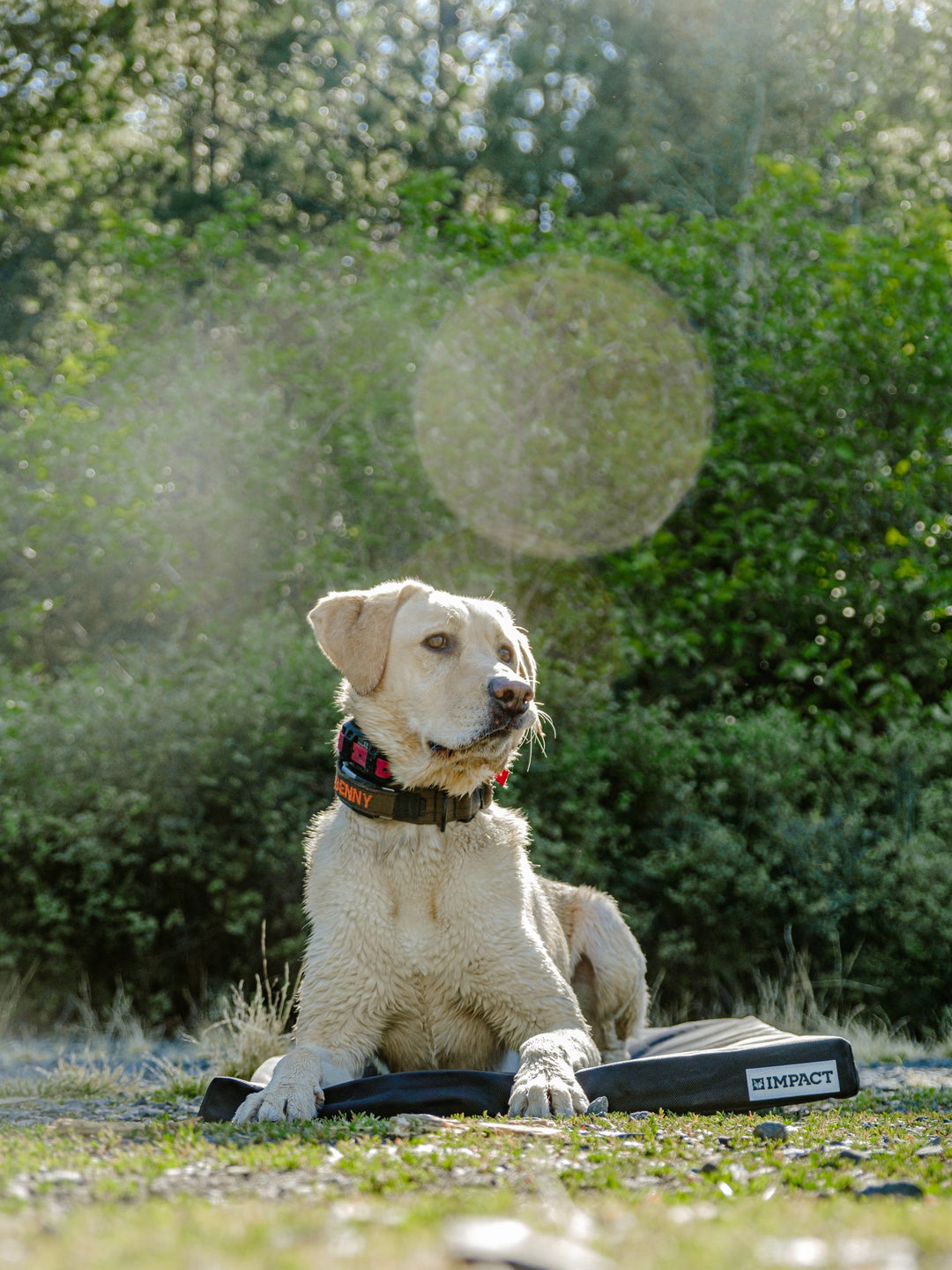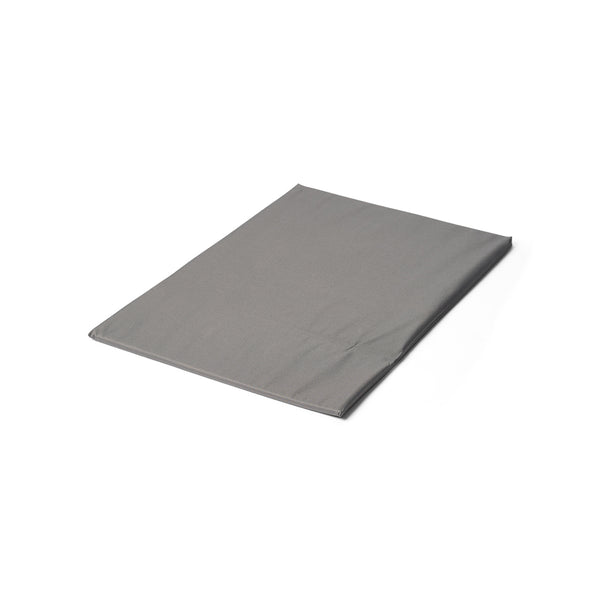Allergies are very common in dogs of all breeds and backgrounds and occur when the dog's immune system has a hyper-reaction to a foreign substance (such as pollen, flea saliva, vaccines, spider bites, bee stings or foods, which would usually only cause modest or maybe no reaction in most dogs).
We presume certain dog allergies like atopy or allergies to pollens and plants are largely hereditary in nature. Most of these dogs exhibit allergic indications between 1–3 years of age, usually as an allergic response to something with which they have had a previous exposure. While most allergies cannot be cured, the objective is to manage them with a combination of treatments that may help relieve or control a dog's allergic signs.
Signs That Your Pet Might Have Dog Allergies
The signs of allergies can vary based on the type of allergic reaction the dog is experiencing and can also vary between dogs. Most all allergic signs in dogs are dermatologic in nature, from:
-
Itching and inflammation of the skin, feet, and ears
-
Hives or possibly swelling of the face
-
Clear, watery eyes and nose
-
Sneezing
Gastrointestinal signs may also exist with vomiting and/or diarrhea as well as possibly blood. In rare cases, a more severe and different allergic response can happen called an anaphylactic response. This is an immediate type of hypersensitivity and will lead to a life-threatening instance in which a dog can acutely collapse due to shock and a severe drop in blood pressure.
Types of Allergies Your Dog Might Have
There are a handful of common features of allergy in dogs:
-
Fleas: Reaction to the protein in flea saliva, not an actual flea. Thus, a dog with only one flea can still have a widespread systemic allergic reaction based upon the one flea saliva protein.
-
Canine Atopic Dermatitis: Also called atopy or atopic dermatitis (AD), it is the most common canine allergy. This is usually an inherited predisposition to allergic symptoms from exposure to relatively common airborne materials or allergens like pollens, grasses, weeds, molds, or fungi. Normal signs of atopy are itch and inflammation in a dog, often seen in the underarms, groin, face, and feet. Atopy is often seasonal.
-
Food Allergies: Allergies to food can have skin characteristics like flaky, itching skin, chronic licking or biting of the paws, or chronic ear infections (often with secondary opportunistic bacterial or yeast infections). Dogs can develop allergies to a food or substance over time, even when they may have had no previous issue with that food substance or protein.
-
Contact Allergies: Contact allergies occur when a dog gets direct exposure to a caustic surface or chemical on the skin and has considerable reaction with irritation affecting the skin. Household cleaners, carpet cleaners, fertilizers, topical medications, and essential oils are examples of exposures that can cause a contact allergy.
-
Bacterial Hypersensitivity: Bacterial hypersensitivity occurs when the normal bacterial flora on the skin elicits an overreaction from the dog’s immune system. This can also occur when the dog has concomitant health problems like hypothyroidism, inhalant allergy, and/or flea allergy.
Diagnosis and Treatment of Your Dog's Allergy
The best way to manage allergies is to know what the allergen is and avoid it or control it. Your veterinarian can take an extensive history and perform a full examination to assist in determining the most likely cause and help guide the most practical treatment plan.
The most accurate means of diagnosing allergies in dogs is immunotherapy or allergy testing to identify the true cause of the allergic response and develop allergen-specific immunotherapy (ASIT).
There are several options for managing a dog's allergies, all of which include:
-
Flea Prevention: Flea prevention is straightforward, fairly easy, and helpful for dogs with flea allergies. Often, flea eradication via a comprehensive anti-parasitic protocol may need to occur to improve the response for the allergy sufferer.
-
Antihistamines: This is generally the least expensive and safest treatment with minimal side effects, but different types of antihistamines can have varying effects and may not work on every dog.
-
Medications: Cortisone products have been utilized too often in the past under good effects with allergy sufferers, although cortisone products do have side effects and should be used conservatively and for shorter durations. Cyclosporines (Atopica), Apoquel (an immunomodulatory), and Cytopoint (an immunotherapeutic) are newer medications being utilized by clinicians extensively with good results to minimize the intense itching response.
-
Dietary Changes/Hypoallergenic Diets: Dairy, beef, and wheat can comprise up to 80% of food allergies in dogs. Hypoallergenic diets use a single "novel" protein (or only one novel protein in the diet) as a protein source. Most pets with food allergies tolerate and respond well when switched to a store-bought hypoallergenic diet; however, it is rarer for an animal to have such extreme allergies that only a home-cooked diet would suffice. If diets are home-cooked, they should be customized with a veterinarian, veterinary dermatologist, or veterinary nutritionist.
-
Environmental and External Aids:
-
Air purifiers can decrease some molds.
-
Dust and pollens are best minimized by using an air cleaner with a HEPA filter.
-
Air conditioning can also decrease airborne allergens since windows are kept closed.
-
Medicated Baths and Supplements: Many medicated dog shampoos contain compounds that soothe the damaged skin and skin barrier while also calming inflammation. Additionally, frequent bathing (weekly to biweekly) may minimize allergic flare-ups by removing allergens from the coat. These medicated shampoos are often prescribed through your veterinarian, and instructions should always be read fully and followed exactly.
-
Supplements: Omega-3 and Omega-6 essential fatty acid supplementation can be considered by your veterinarian. These essential fatty acids are naturally anti-inflammatory and antioxidative.
-
Antibiotics and Antifungals:
-
Antibiotics are commonly needed for secondary skin infections.
-
Antifungal products are commonly needed for secondary yeast infections.
All applicable allergy treatments will have their own advantages and disadvantages. Locating the source of your dog's allergy and designing a specific treatment plan with your veterinarian is recommended.













